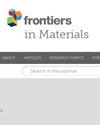用不含 CTAB 的生物功能化金纳米棒构建光热活性纳米药物的简单方法,在癌细胞和疤痕治疗中的潜在体内应用
IF 2.6
4区 材料科学
Q3 MATERIALS SCIENCE, MULTIDISCIPLINARY
引用次数: 0
摘要
十六烷基三甲基溴化铵(CTAB)是一种常用于合成金纳米棒(AuNR)的表面活性剂,由于在生物应用中具有细胞毒性,限制了其生物医学应用性,尤其是在癌症治疗方面。本研究介绍了一种有效去除 CTAB 的直接方法,该方法结合了配体置换和表面生物共轭过程,可有效去除 CTAB,同时用透明质酸(HA)对纳米棒进行功能化,以增强生物相容性并引入对癌细胞的靶向能力。通过紫外可见光谱、表面增强拉曼散射光谱(SERS)、衰减全反射光谱(ATR)、傅立叶变换红外光谱(FTIR)和 X 射线光电子能谱(XPS),研究了用 HA 功能化前后 CTAB 封装和不含 CTAB 的 AuNR 的表面化学修饰。通过zeta电位、动态光散射(DLS)和透射电子显微镜(TEM)对不同质子纳米粒子的表面电荷、尺寸和形态进行了表征。通过激光照射和热像仪测量评估了光热反应。通过 MTT 和 MitoSOX 试验,分别对过表达 HA 特异性识别的 CD44 细胞表面受体的前列腺癌细胞 PC-3 和 CD44 阴性的小鼠成纤维细胞(3T3 细胞系)进行了细胞毒性和氧化应激的体外细胞实验。共聚焦激光扫描显微镜(LSM)仔细观察了细胞摄取和细胞器的改变,而光学显微镜(伤口划痕试验)则研究了对细胞迁移的扰动效应。研究结果为调整金纳米棒在癌症治疗中的特性提供了一条很有前景的途径,它可以降低细胞毒性,提高靶向治疗效果,还可以控制疤痕组织的形成。本文章由计算机程序翻译,如有差异,请以英文原文为准。
A simple approach for CTAB-free and biofunctionalized gold nanorods to construct photothermal active nanomedicine for potential in vivo applications in cancer cells and scar treatment
Cetyltrimethylammonium bromide (CTAB), a surfactant commonly used in the synthesis of gold nanorods (AuNR), presents challenges owing to cytotoxicity in biological applications, limiting their biomedical applicability, particularly in cancer therapy. This study introduces a straightforward methodology for the effective removal of CTAB by utilizing a combination of ligand replacement and surface bioconjugation processes that efficiently eliminates CTAB and simultaneously functionalizes nanorods with hyaluronic acid (HA) to enhance biocompatibility and introduce targeting capabilities toward cancer cells. The surface chemistry modification of CTAB-capped and CTAB-free AuNR, before and after the functionalization with HA, was scrutinized by UV–visible, surface-enhanced Raman scattering (SERS), attenuated total reflectance (ATR) Fourier-transform infrared (FTIR), and X-ray photoelectron (XPS) spectroscopies. The surface charge, size, and morphology of the different plasmonic nanoparticles were characterized by zeta potential, dynamic light scattering (DLS), and transmission electron microscopy (TEM). The photothermal response was assessed by laser irradiation and thermal camera measurements. Proof-of-work in vitro cellular experiments of cytotoxicity and oxidative stress were carried out on prostate cancer cells, PC-3, overexpressing the CD44 cell surface receptor specifically recognized by HA, in comparison with the CD44-negative murine fibroblasts (3T3 cell line) by MTT and MitoSOX assays, respectively. Cellular uptake and organelle alteration were scrutinized by confocal laser scanning microscopy (LSM), while the perturbative effects on cell migration were studied by optical microscopy (wound scratch assay). The study’s findings offer a promising pathway to tune the gold nanorod properties in cancer treatment by reducing cytotoxicity and enhancing targeted therapeutic efficacy, as well as in the control of scar tissue formation.
求助全文
通过发布文献求助,成功后即可免费获取论文全文。
去求助
来源期刊

Frontiers in Materials
Materials Science-Materials Science (miscellaneous)
CiteScore
4.80
自引率
6.20%
发文量
749
审稿时长
12 weeks
期刊介绍:
Frontiers in Materials is a high visibility journal publishing rigorously peer-reviewed research across the entire breadth of materials science and engineering. This interdisciplinary open-access journal is at the forefront of disseminating and communicating scientific knowledge and impactful discoveries to researchers across academia and industry, and the public worldwide.
Founded upon a research community driven approach, this Journal provides a balanced and comprehensive offering of Specialty Sections, each of which has a dedicated Editorial Board of leading experts in the respective field.
 求助内容:
求助内容: 应助结果提醒方式:
应助结果提醒方式:


